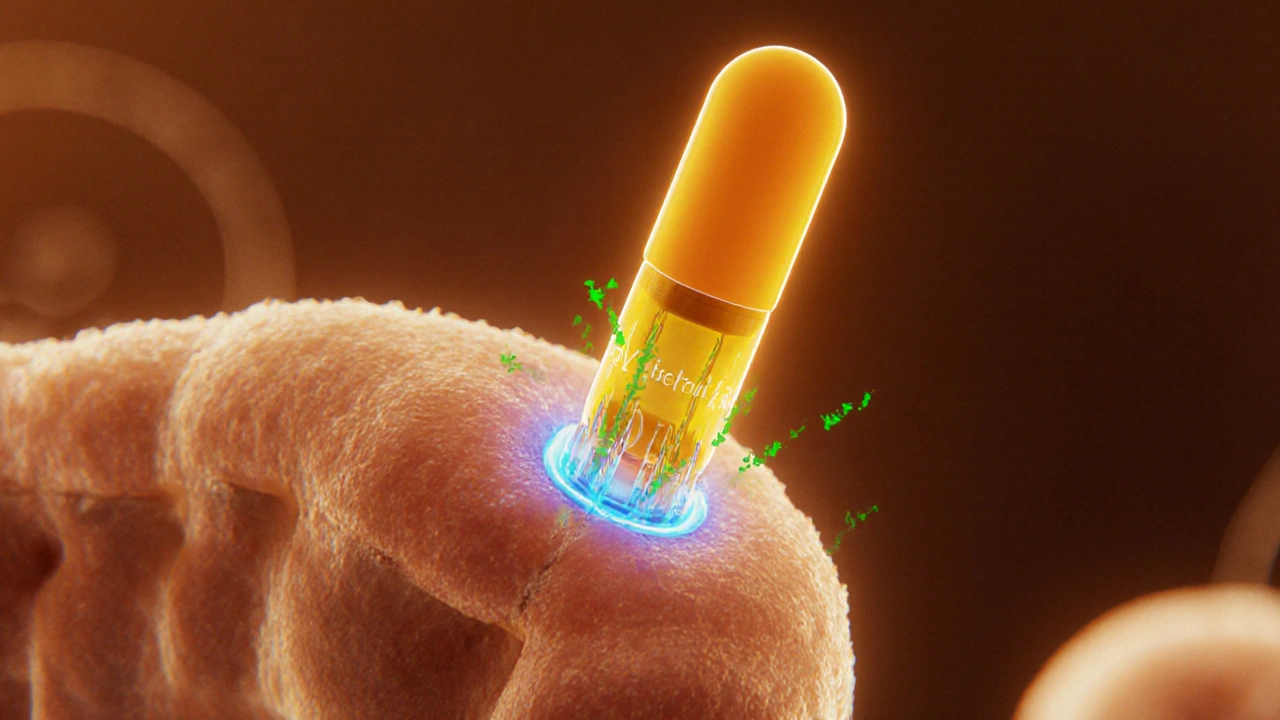Rocaltrol: Uses, Dosage, and Safety Guide
When working with Rocaltrol, the brand name for calcitriol, the active form of vitamin D prescribed to raise blood calcium, you’re handling a key tool for treating hypocalcemia, a condition where calcium levels fall below normal. This low‑calcium state often stems from chronic kidney disease, a disorder that limits the kidneys’ ability to convert vitamin D into its active form. Because the kidneys can’t make enough calcitriol on their own, doctors prescribe Rocaltrol to jump‑start calcium absorption and keep bones strong.
Rocaltrol works by mimicking the body’s natural vitamin D, binding to receptors in the gut, kidneys, and bone tissue. The result is better calcium uptake from food and a tighter control of parathyroid hormone, which normally spikes when calcium is low. Patients with osteoporosis, secondary hyperparathyroidism, or those on dialysis often find Rocaltrol essential. The medication comes in tiny drops or tablets, making dose adjustments straightforward; doctors usually start low and titrate up based on blood‑test results.
Key Factors to Watch When Using Rocaltrol
Because Rocaltrol raises calcium, regular monitoring is a must. Blood tests for calcium, phosphorus, and parathyroid hormone guide dosage tweaks and prevent hypercalcemia, a dangerous over‑correction. Side effects like nausea, vomiting, or muscle weakness can signal too much calcium, so patients should report any new symptoms promptly. Interactions matter, too: thiazide diuretics, calcium supplements, and certain antacids can push calcium levels higher, while drugs like glucocorticoids may blunt Rocaltrol’s effect.
Understanding the broader picture helps. Vitamin D deficiency, common in people who get little sunlight or have malabsorption issues, can worsen hypocalcemia. In such cases, Rocaltrol may be combined with dietary changes or over‑the‑counter vitamin D2/D3 to reach optimal levels. For kidney patients, the drug also supports bone health by counteracting the mineral imbalance that dialysis creates. Knowing how chronic kidney disease reduces the body’s own calcitriol production explains why Rocaltrol is often a lifeline for dialysis patients.
The dosage guide varies by age, weight, and the reason for prescribing. Adults with hypocalcemia might start at 0.25 µg daily, while children receive weight‑based dosing. Patients on dialysis often need a higher maintenance dose because their kidneys can’t retain calcium efficiently. Doctors always tailor the plan, using the principle that “the lowest effective dose is safest.”
Below you’ll find a curated list of articles that dive deeper into each of these topics—how to spot reliable online pharmacies, compare Rocaltrol with other vitamin D analogs, manage side effects, and more. Whether you’re a patient, caregiver, or health‑care professional, the posts ahead give practical tips, real‑world comparisons, and up‑to‑date guidance to help you make informed decisions about Rocaltrol therapy.
